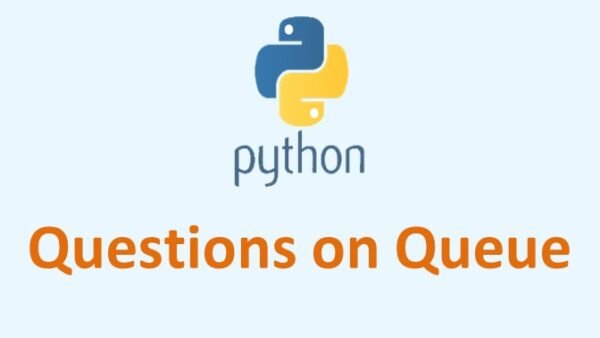

The pop operation typically removes the item from the queue. Items are pushed onto the queue and are popped from the queue when they are due to be processed. In computer terms, queues are serviced using push and pop operations. When a new customer arrives, they join the back of the queue. The first person to arrive is at the front of the queue. For instance, a line of people at a bank or a coffee shop is a queue. Every time a group of people line up for something, they form a queue. Queues are a familiar concept in everyday life. Items are removed from the list in the same order they arrived.

They make programs easier to understand and write, and often faster and more reliable too.Ĭonceptually, a queue represents data items as an ordered list. Data structures are used to organize, manage, and store data. Queues in Python What is a Queue?Ī queue is a fundamental programming data structure.
Python queue type how to#
This guide introduces the Python priority queue and explains how to implement it in Python 3. Prioritization can be complicated, but fortunately Python priority queues can be easily and efficiently implemented using a built-in module. A queue that retrieves and removes items based on their priority as well as their arrival time is called a priority queue. However, it is often necessary to account for the priority of each item when determining processing order. You can view EDUCBA’s recommended articles for more information.In Python, queues are frequently used to process items using a first in first out (FIFO) strategy. We hope that this EDUCBA information on “Queue in Python” was beneficial to you. After a good understanding of this, one will feel confident to solve data storage inefficiencies effectively. Stacks and queue are the most widely used data structures in the real world. We discussed the types of queues and their operations, which should help you get a good grip over them and moreover to understand their real use cases. The above covered is one of the most important concepts in the data structures of python.


Python queue type code#
Python Codeįrom multiprocessing import Queue Code #1 qq = Queue() This is a type of queue where items need to be processed in parallel mode. “que” and “multiprocessing.queue” are two more good python module which can be explored for queues. Queue get():> This function get() is use to remove item from queue. Queue put(): It puts an item in the queue.Ħ. Qyeue qsize(): It returns the size of the queue.ĥ. In order to check if it’s done, this function is used. Queue task_done: If tasks are enqueued and going on. If the queue holds no items, it returns False. If the queue holds some values, it returns True. In returns True or False based on any item available in the queue. Now let’s see some operations related to queue: If, head > tail, then size = maxSize – (head-tail).If, tail >= head, then size = tail – head.If Yes, then return message: Queue is empty.Increment the tail pointer.ĭequeue: Check if the number of elements in the queue = 0: If No, then add the new data element to the location of the tail pointer.
Python queue type full#
If Yes, then return message: Queue is full.maxSize, Initialize values for head and tail pointers.Įnqueue: Check, if the number of elements = maxSize – 1: The application of the circular queue is mostly in the traffic system, CPU scheduling, etc.īelow we learn the algorithm circular queue. This also works on the principle of “FIFO”. Here the end of the queue that is tail becomes the first of the queue that is head. This is a type of queue, which is circular in shape. However, if there are two items holding the same value, then the order comes into consideration. So, as one can see, the lowest value items come out of the queue first. This queue is a bit different from LIFO and FIFO queue. Here is the example of the LIFO(last in, first out) queue: Same addition and deletion can be done over LIFO as well. Addition and deletion of multiple elements in queue: Now, since we added elements in the queue, let’s see how it looks through the code below: Whereas s.get() will help in retrieving an element from the queue. S.put() helps in keeping an element inside a queue. Now let’s put something in a queue and see. Here is the example of FIFO queue: Addition and deletion of one element in the queue:įIFO is, by default, if queue type is not defined explicitly. Examples to Implement Queue in Pythonīelow are examples mentioned: Example #1. Python provides it in the form of module name “queue”, which can be imported to the python environment and used directly. If yes: Pop the first element from the list and then increment Head by 1.


 0 kommentar(er)
0 kommentar(er)
